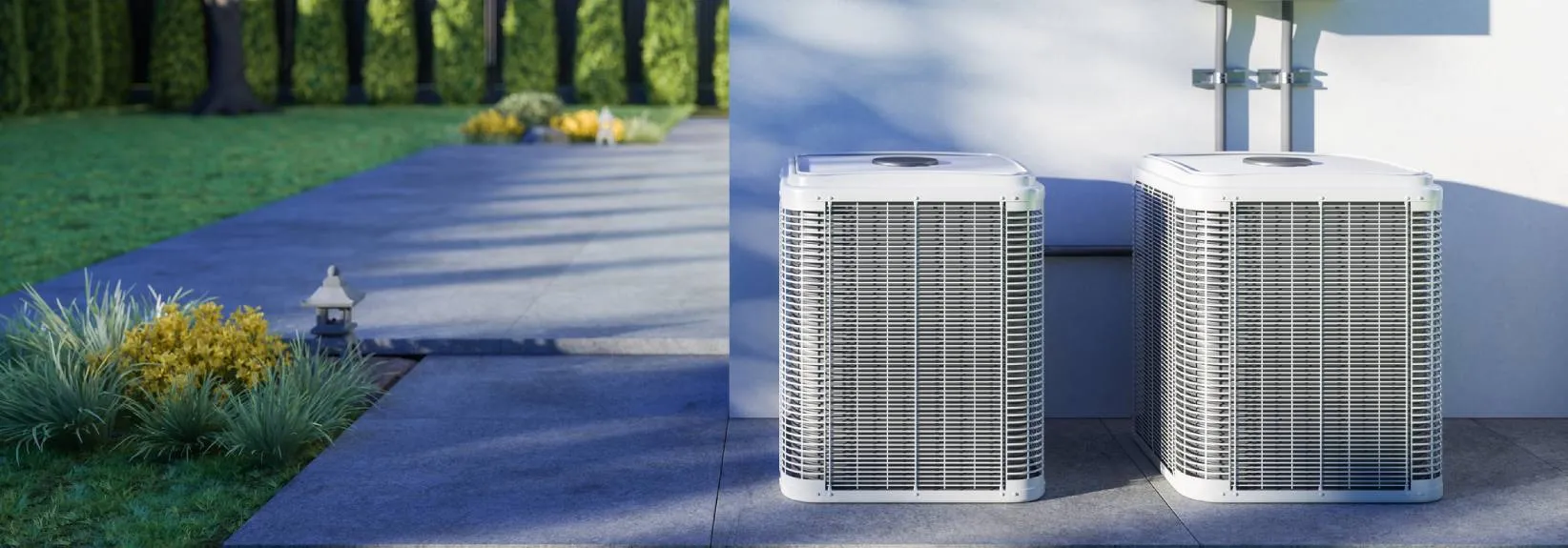Air Conditioner vs. Air Handler
If you’re searching for heating and cooling services, you may find confusing, sometimes contradictory information about a variety of HVAC systems. One element that creates a lot of confusion is the air handler. Is this the equivalent of an air conditioner? We’re here to clear things up.
What Is an Air Handler?
An air handler is the indoor component of some kinds of HVAC systems. It connects to a network of air ducts that deliver conditioned air throughout the building. Air handlers range in size, type and capacity, based on the application.
Some people use the jargon of “air handler” and “blower” interchangeably, but this is not right. An air handler is an entire unit containing a blower and a number of other components, all of which operate together to condition and circulate the air.
Does an Air Conditioner Use an Air Handler?
Generally, an air conditioner [shares|uses|utilizes} the furnace’s blower motor, so no air handler is required. However, in environments where home heating is not something that is necessary, an air conditioner may be the lone HVAC equipment present. In this situation, the indoor air handler runs in conjunction with the outdoor unit, known as the condenser.
In this setup, the AC unit’s air handler [blows|forces|pushes} indoor air [across|over|along the outside of} the evaporator coil, which absorbs heat and collects moisture, leaving the air handler to deliver cooled, dehumidified air back to the building via ductwork. Refrigerant lines link the air handler to the outdoor condenser, facilitating the heat transfer to the outside. This allows air conditioning to uphold a constant, comfy indoor temperature and humidity level.
Does a Heat Pump Use an Air Handler?
This is where air handlers are most commonly found. In cold climates where heat pumps are less dependable, they are at times installed alongside furnaces, creating what’s referred to as a dual-fuel system. However, advancements in cold-climate heat pumps make dual-fuel systems less popular as of late. Without a furnace to lend its blower motor, heat pumps will need a dedicated air handler to circulate conditioned air.
Heat pumps work by removing heat from the outside air and shifting it inside using the indoor coil. The air handler blows air across the coil to collect heat before circulating it inside the building. A heat pump can additionally be used for cooling, where it extracts heat from the indoor air and transfers it outside, just like an air conditioner.
Does a Furnace Use an Air Handler?
No. Furnaces are made with a blower motor to move conditioned air. The blower is typically found within the furnace. It forces air across the heat exchanger, a metal component that exchanges heat from a fuel source to the air blowing across it. The fuel source can be natural gas, propane or oil, which is ignited to generate heat. Once warmed up, the air is distributed back through the ductwork system and back into the building.
What Are the Parts of an Air Handler?
The main components of an air handler include:
- Blower: The blower is a motor-driven fan that circulates air throughout the ductwork. It moves air across the heating or cooling elements to manage the indoor temperature.
- Heating or cooling elements: According to the type of HVAC system you have, the air handler may contain heating or cooling elements, including an evaporator coil or backup electric heat strip.
- Air filter: An HVAC air filter takes dust, dirt and other contamination from the air as it enters the air handler to be heated or cooled. Air filter types and efficiency ratings vary based on system requirements. Remember to change your air filter routinely to prevent restricting airflow through the system.
- Dampers: Dampers are used to control airflow in buildings with zoned heating and cooling. They can be manually or automatically powered to direct air to certain rooms as desired to maintain a comfortable temperature.
- Humidifier or dehumidifier: Some air handlers have a humidifier or dehumidifier, which controls the indoor relative humidity level. A humidifier adds moisture into the air in the winter, while a dehumidifier removes moisture in the summer.
- Control system: The control system is responsible for regulating the air handler. It may include a thermostat, humidistat or other sensors to monitor the temperature and humidity in the building.
Schedule Air Conditioner or Air Handler Repair
If you’re suffering from issues with your air conditioner, air handler or other HVAC components, Service Experts Heating & Air Conditioning is here to help you out. Our team of Expert techs can diagnose and repair any problems with your climate control system, so that it runs safely and efficiently. We believe in our excellent work so much that we back all repairs with a one-year 100% satisfaction guarantee! For more information or to set your home up air conditioning repair in North America, please reach out to a Service Experts office in your neighborhood today.
